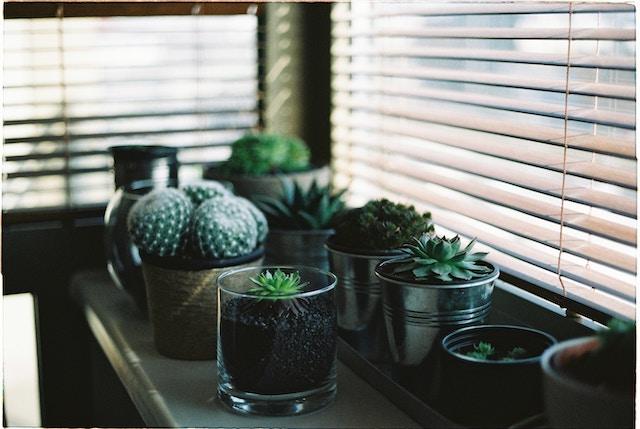Choosing the right window treatment for your home will depend on what you and your household prioritize. Is it the ability to control how much light gets in? Is it visual impact? Climate control? Privacy? Window shape? Cost? These needs could also change from room to room. Maybe you want blackout curtains for your bedroom but a more adaptable option for the living room. However you want to transform a room, here’s a run down of the benefits and drawbacks of different window treatment styles as well as a few helpful tips to consider while decorating.
Shades
Pros: Fabric shades, such as honeycomb shades, are a classic option. They’re easy to open and close, and they last an eternity.
Cons: Shades don’t have slats, so you can’t adjust the level of light that filters through. They’re usually not completely opaque, either, so you’re fairly limited in terms of natural lighting.
Roman Shades
Pros: Roman shades are one of the most versatile options in terms of color and pattern. Plus, they look great and have a classic, formal feel.
Cons: Because you have to roll roman shades up completely to allow light in rather than simply twisting slats open, the cords and pulling mechanisms of roman blinds go through more wear and tear than other window treatment options.
Roller Blinds
Pros: Roller blinds are a great option for bathrooms, kitchens, and homes in humid climates because they are resistant to water damage. Plus, like roman shades, roller blinds come in more designs than traditional blinds and are often more affordable, as well.
Cons: Because they’re made of a solid sheet of material, roller blinds can’t adjust light like blinds with slats can.
Venetian Blinds
Pros: Venetian blinds are a timeless option. Their slats make it easy to control how much light gets through, and they come in materials that are resistant to moisture.
Cons: Usually made of plastic or metal, these blinds are limited in terms of color and design options.
Shades and Blinds with Blackout Lining
Pros: Blackout shades are great option for bedrooms because they can completely block out light when rolled down.
Cons: Since they block light so well when closed, you won’t be able to filter light with this style. Also keep in mind that the blackout lining is usually visible from outside the house.
Vertical Blinds
Pros: Vertical blinds are great for ceiling to floor windows and doors. They can effectively filter light like blinds with horizontal slats and can add a modern feel to a room.
Cons: This style isn’t ideal for high traffic doorways or in hectic households with kids and pets due to its lack of durability. Also, vertical blinds have a very distinct look, so if you don’t consider surrounding interior decoration, they might look out of place.

Additional Tips:
Creative Pairings: Blinds are reliable and timeless while curtains add flare and block light from the sides of windows. Get the best of both worlds, and pair them together for versatility.
More Than One Way to Measure: There are two ways to fit your blinds to your window frame. Measure them to fit inside the window frame for small rooms and when paired with curtains. Or, measure wider than the frame to block any light that might come in from the sides. If you haven’t decided which fit you prefer, or if your home doesn’t have standard sized windows, made to measure blinds are a great option to look into.
Consider the Material: Some rooms require blinds and shades made of more durable materials. For example, many people love the organic look of wood blinds. However, real wood is prone to water damage, so faux wood may be a more affordable, durable option if you plan to put them in a bathroom or kitchen. Many also assume that aluminum is a sturdy choice because it’s tougher than cloth and doesn’t stain as easily. Consider checking Littlehampton Blinds for a great variety of blinds before making a purchase. Keep in mind, though, that bends, dings, and other ailments stick around forever on metals.






